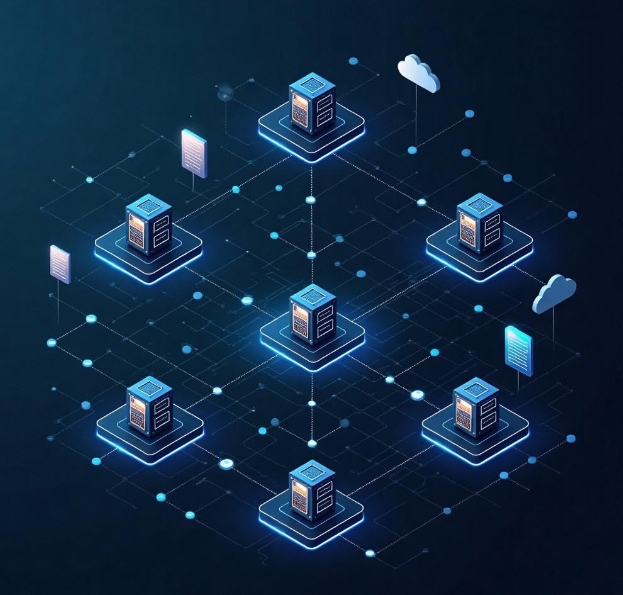DApp Development & Customization: Merging Diverse Market Needs with User Experience
As blockchain technology matures and becomes more widespread, decentralized applications (DApps) are gradually gaining popularity. They not only bring new operating methods to fields such as finance, gaming, social networking, and supply chain, but also create innovative business models and sustainable growth opportunities for enterprises. In this rapidly changing digital age, **DApp development and customization** has become a key path for many companies to achieve differentiated competition and meet diverse user needs. This article will delve into how to create applications that truly meet the needs of the market and users through professional DApp customization, covering topics such as the concept and value of DApps, the necessity of customized development, strategies to meet diverse market demands, core methods for optimizing user experience, the process and technical aspects of customized development, and future development trends.

I. What is a DApp and its Core Value
A DApp is an application built on a blockchain network. Its biggest difference from traditional centralized applications is that its data and logic are driven by blockchain smart contracts, and its operation does not depend on a single server or institution, but is distributed across nodes globally. This architecture endows DApps with the following core values: Decentralization and Data Transparency Data is stored on the blockchain, free from the control of a single institution. Transactions and operations are publicly verifiable, enhancing user trust in the platform. Security and Immutability The blockchain's encryption mechanisms and consensus algorithms make data extremely difficult to tamper with, significantly reducing the risk of hacking and data breaches.
Automatic Execution of Smart Contracts
Pre-written smart contracts can be automatically executed when trigger conditions are met, reducing human intervention, improving efficiency, and lowering operating costs.Globalization and Borderlessness
DApps are not limited by geographical boundaries, allowing users to freely access and use them globally, making them particularly suitable for scenarios such as digital assets and cross-border transactions.Differentiated Business Models
Different industries and companies have different operating models and target users, making it difficult for generic templates to accurately match complex business needs.Unified Brand and Interface Style
Custom development ensures that the application maintains consistency with the company's brand in UI design, interactive experience, and visual elements, enhancing user recognition.Flexibility in Function Expansion
Custom development allows for flexible expansion of functions based on the company's development stage, such as adding NFT trading, cross-chain asset management, and DAO governance modules.Compliance and Localization Support
Different regions have different laws and policies regarding blockchain and crypto assets. Custom development can optimize for compliance and adapt to local markets.
II. Why is Customized DApp Development Necessary?
Although there are many open-source DApp templates on the market, custom development is almost an inevitable choice to truly adapt to the business logic and market demands of enterprises. The main reasons are as follows:
III. Strategies to Meet Diverse Market Needs
The value of DApp customization lies in its ability to provide highly tailored solutions for different markets and scenarios. Here are some typical market demands and corresponding strategies: 1. Digital Finance Sector 1. Digital Finance Sector Demands: Secure asset management, fast transaction settlement, and multi-currency support. Strategies: Build a secure system based on multi-signature and hardware wallet support, introduce Layer 2 technology to improve transaction speed, and achieve cross-chain asset interaction with mainstream public chains.
2. Blockchain Games
Demands: On-chain assets, tradable items, decentralized economic system.
Strategy: Utilize NFT protocols (such as ERC-721, ERC-1155) to mint game assets, realize an on-chain trading market, and design a token economic model to incentivize player participation.
3. Social and Community Platform
Requirements: Data privacy protection, decentralized identity, content incentive mechanisms.
Strategy: Introduce decentralized identity authentication (DID), encrypted on-chain storage of content, and based on
Community contribution reward mechanism for tokens. 4. Supply Chain and Traceability
Strategy: Record information such as product production, transportation, and sales on the blockchain, display traceability information to consumers through a visual interface, and combine with IoT devices to achieve automated data collection.
IV. Core Methods for Optimizing User Experience
Although DApps are technologically advanced, they still struggle to achieve widespread adoption if the user experience is poor. In custom development, the following aspects need to be addressed to optimize the user experience:
Simplify the onboarding process
Provide features such as one-click wallet creation and direct login with social media accounts to lower the barrier to entry for new users.Smooth Interactive Experience
Optimize front-end loading speed, reduce blockchain transaction confirmation waiting time, and introduce technologies such as Lightning Channel to improve response speed.Visualized Operation and Data Feedback
Use intuitive charts, animations, and progress bars to display data and transaction status, making application operations clear to users at a glance.Multi-platform Adaptation
Supports access from multiple platforms including Web, mobile (iOS, Android), and desktop, ensuring smooth use on any device.Security Tips and Risk Education
Provides clear security tips for critical operations (such as transfers and authorizations) and guides users to understand common blockchain security risks.
V. Process and Technical Points of Custom DApp Development
Custom DApp development requires a rigorous process and a solid technical foundation, typically including the following stages:
Requirements Analysis and Solution Design
Engage in in-depth communication with clients to clarify business scenarios, target user groups, functional modules, and technical architecture, and formulate an executable development plan.Blockchain Platform SelectionBased on project requirements, select a suitable public or consortium blockchain (such as Ethereum, BNB Chain, Solana, Polygon, Hyperledger, etc.) and evaluate its performance, cost, and ecosystem support.
Smart Contract Development and Audit
Write secure and efficient smart contracts and have them audited by a third-party auditing firm to prevent asset losses caused by vulnerabilities.Front-end and Back-end Development and Integration
The front-end focuses on UI and interactive experience, while the back-end is responsible for interacting with blockchain nodes and the database to ensure data synchronization and stable operation.Testing and Optimization
Includes multiple stages such as unit testing, functional testing, performance testing, and security testing to ensure stable operation of the application in different environments.Deployment and Operations
Deploys the DApp to the production network and provides continuous technical maintenance and functional iteration to ensure long-term stable operation.
VI. Future Trends in DApp Customization
Cross-chain Interoperability
Future DApps will place greater emphasis on cross-chain capabilities, allowing users to freely transfer assets and data between different blockchain networks.Decentralized Identity (DID) Becomes Popular
Users can seamlessly log in and verify across multiple applications without relying on traditional account systems, thanks to decentralized identities.Integration with AI Technology
AI can provide DApps with smarter recommendation, risk control, and automated management functions, enhancing personalized experiences.More Industry Applications
Besides finance and gaming, a large number of DApp applications will emerge in education, healthcare, energy, and other fields, driving the digital upgrade of industries.
DApp development and customization are not just about technical implementation, but also an important means for enterprises to build competitive barriers in the digital economy era. It can deeply integrate the decentralized, secure, and transparent characteristics of blockchain with specific business needs, satisfying diverse market demands and bringing users a safer, smoother, and more personalized experience.
In the future, with the improvement of blockchain infrastructure and the popularization of user education, the application scenarios for customized DApp development will be broader, and the potential will be limitless. Whether it's a startup or a large institution, seizing this trend and creating customized DApps will give them a greater long-term competitive advantage.
-

DApp Development & Customization: Merging Diverse Market Needs with User Experience
As blockchain technology matures and becomes more widespread, decentralized appl···
-

DApp项目开发的核心技术体系解析
随着区块链技术的快速发展,去中心化应用(DApp)已成为Web3生态的重要组成部分。与传统的Web应用不同,DApp的核心逻辑运行在区块链上,具有去中心化、不可···
-

DApp开发是什么?核心概念与技术解析
随着区块链技术的快速发展,去中心化应用(DApp)逐渐成为了区块链应用的一个重要分支。DApp作为去中心化应用的缩写,它突破了传统互联网应用的局限,具有较强的创···

 Blockchain
Blockchain










